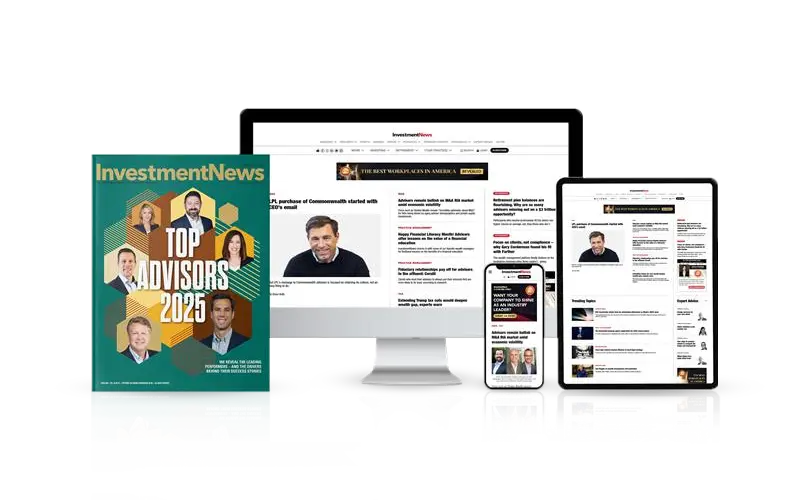
“The Bluerock share redemptions are outrunning fund raising,” said one analyst. “I can’t imagine it will be treated kindly in the public markets.”
By Bruce KellyElsewhere in Utah, Raymond James also welcomed another experienced advisor from D.A. Davidson.
Initial early gains following the June data were reversed as pass-through effects from tariffs stoke concerns.
A federal appeals court says UBS can’t force arbitration in a trustee lawsuit over alleged fiduciary breaches involving millions in charitable assets.
The seven-person team based in Michigan, which includes two father-son advisor duos, continues Elevation Point's strategy of supporting growth-focused independence.
Orion's Tom Wilson on delivering coordinated, high-touch service in a world where returns alone no longer set you apart.
Barely a decade old, registered index-linked annuities have quickly surged in popularity, thanks to their unique blend of protection and growth potential—an appealing option for investors looking to chart a steadier course through today's choppy market waters, says Myles Lambert, Brighthouse Financial.
NorthRock Partners' second deal of 2025 expands its Bay Area presence with a planning practice for tech professionals, entrepreneurs, and business owners.
Kevin Warsh, who sat as a governor for five years spanning the 2008 financial crisis, has since become a frequent critic of the central bank.
Financial advisors weigh in on the surge in copper prices in the wake of President Trump's tariff announcement.
Hadley, whose time at Goldman included working with newly appointed CEO Larry Restieri, will lead the firm's efforts at advisor engagement, growth initiatives, and practice management support.
The latest federal data show the CPI increasing 2.7% over the previous 12 months, outpacing the 2.4% May figure and raising questions around the impact of trade uncertainty.
That's a wrap on the 2nd Annual InvestmentNews Awards
As Americans increasingly seek financial dependency as they plan for retirement, annuities should be central to a broader plan.
Bruce chats with reporter Andrew Cohen, who has covered the RIA industry for InvestmentNews since late March, while crossing over with his old beat covering sports business as the trendy asset class just hit a record-breaking $10 billion team sale.
David Musto, CEO of Ascensus, sits down with InvestmentNews anchor Gregg Greenberg to highlight the challenges faced by small businesses seeking to offer retirement plans to employees, as well as ways to overcome them.
Dhruv Nagrath, director of fixed income strategy at BlackRock, sits down with InvestmentNews anchor Gregg Greenberg to discuss the massive inflows into fixed income ETFs so far in 2025, as well as the forces driving them.
Steph Guild, chief investment officer at Robinhood, sits down with InvestmentNews anchor Gregg Greenberg to discuss how Robinhood is bridging the gap between everyday investors and private wealth services.
Venue: Tribeca 360, New York
The Women Advisor Summit is the leading event for women in wealth management who are ready to grow their practice, expand their influence, and lead with purpose in a rapidly changing industry.
Venue: Tribeca 360, New York
Join us in honoring exceptional female advisors, wealth managers, and financial leaders for their bold achievements, innovative leadership, and transformative impact. Witness these outstanding professionals being recognized on a national stage with the glitz and glamour they deserve.
High-net-worth clients want more than performance—they want a trusted advisor who delivers personalized, proactive service. Join Orion for a webinar on proven strategies to attract, serve, and retain HNW clients. Whether you're new to the space or refining your approach, you'll gain insights to deepen relationships and grow with confidence. Watch now to elevate your practice.
AVAILABLE NOWCold calling is inefficient, and financial advisors need a smarter way to connect with prospects ready to engage. Join our webinar to hear about Aidentified, an AI-powered prospecting tool that helps you quickly find warm leads and close deals faster. Learn how to build targeted prospect lists using over 150 attributes, including career history, wealth segment, and income, and leverage AI relationship mapping to identify your warmest connections in your network. Enhance your prospecting strategy and grow your client base more effectively — watch now!
AVAILABLE NOW